Jim's Gems 1994: Portishead and Nirvana on the list of albums marking 30 years
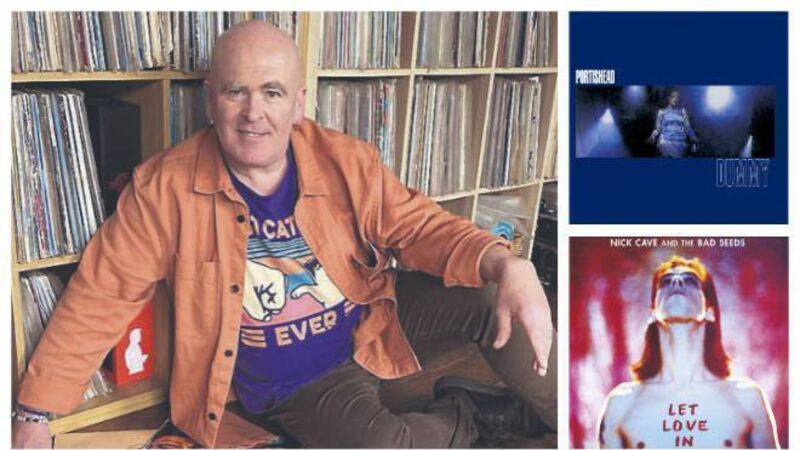
Portishead and Nick Cave are among Jim Comet's 1994 picks
It’s often been said that the 1990s were like the ’60s, if you can remember them clearly then you weren’t really there. However, there’s nothing like a bit of music to jog the memory and while we were partying like there was no tomorrow and throwing shapes on the dancefloor, we were listening to some serious records. Here’s my favourite 10 for the year - the ones I can remember anyhow.
This was originally lumped in with the trip hop movement, but it was so much more. And while trip hop had its moments, this was on a whole other level. A highly creative and driven producer/writer, a voice like black velvet, and a band who could interpret the vision. The vision was drenched in cinematic funk, soul, jazz and hip hop and it created a sound that was both new and unique while also sounding like it came from another era. Dusty, Isaac, Sarah Vaughan and even Junior Mance are all in there, but it doesn’t sound like any of them. Completely embraced by the coffee table set, it’s probably the best record of the 90s and one of the greatest debuts ever.
Nick Cave sailed through the 1990s on his own musical journey, oblivious to the dancefloor shenanigans elsewhere. As a hardcore fan I was thankful, as that would have been a step too far. His music was changing, and I wasn’t really sure if I was ok with it. While the signs were there on Henrys Dream, this album signalled the end of one phase and a switch to a more commercial sound. You can’t be underground all your life I suppose, and he wanted to sell more records. While ‘Jangling Jack’ and ‘Ain’t Gonna Rain No More’ were trademark Bad Seeds, there was a definite more radio friendly vibe off ‘Red Right Hand’ and the single ‘Let Love In’. He still managed to keep the old fans like me happy. The album’s closing track, ‘Lay Me Low’ — a little nod to Leonard Cohen — is absolutely stunning.
After six studio albums with Throwing Muses that didn’t exactly set the world on fire, Kristin Hersh decided in 1994 to take the plunge and go it alone. It led to arguably her finest work. This is much more than a simple singer/songwriter album even though the arrangements are often sparse, and the accompaniment is no more than guitar, piano and occasional cello. Her voice is the key, and the way she projects her voice and uses its power with her unique phrasing and sometimes manic delivery.
Tracks like ‘Loon’ and ‘The Letter’ jump out of the speakers and assault you. Her acoustic playing is also exceptional. The chord sequences on ‘Lurch’ and ‘Sparky’ are reminiscent of David Crosby at his finest. The fact that this is still a go-to record for many aspiring singer/songwriters today is a testament to its greatness.
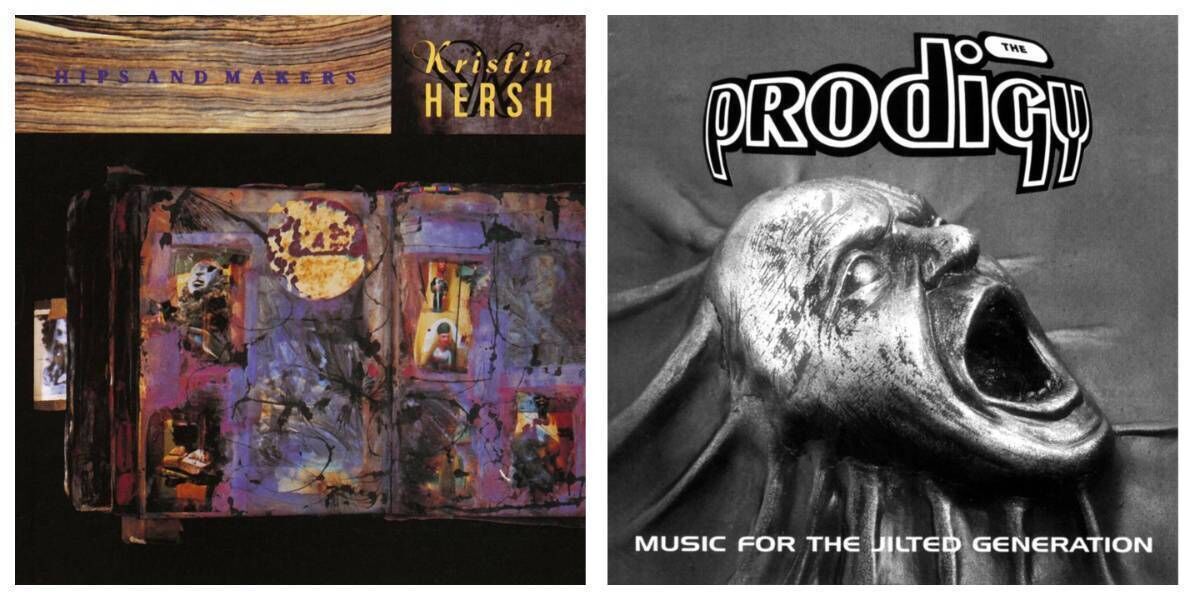
Having made their reputation on the underground rave scene, and with a successful debut album under their belt, The Prodigy decided to risk it all by using their second LP as a platform to make a big statement. A concept album inspired by the anger and disillusionment felt by many over the UK government’s Criminal Justice Bill, which was aimed at marginalising and isolating the rave scene.
This was the sound of the illegal parties, the pirate radio stations and the underground breakbeat scene. It was rooted in the streets, council estates, and tower blocks. It had an anti-establishment vibe off it not seen since punk, and it was arguably more of a threat. The Prodigy managed to bottle all the rage, frustration, anger and defiance felt by those within the scene and set it to a backdrop of intense, angry and beautifully crafted beats.
The breakdowns and the intense minor dissonant chords used in those breakdowns add to the sense of derangement and edginess of the record in total. It hasn’t aged well because of ’90s production techniques, which is a shame because it’s a vital artistic statement of that time.
I always had Chumbawamba down as your typical anarchist hippy punk collective in the style of Crass, but a bit more musically refined. The dog is on a lead rather than a string. So when Anarchy showed up in Comet Records in Cork where I worked, I was somewhat taken aback. The message was radical but on point. Racism, homophobia, domestic violence, anti-establishment delivered in a straightforward, clever and no holds barred style against a pop/folk/punk backdrop awash with ’90s dancefloor sensibilities. This was Britpop but not as we know it. Tailor-made for radio but without a realistic chance of getting radio play. It got plenty of play in the shop, practically every day. It baffles me to this day that this record wasn’t bigger.
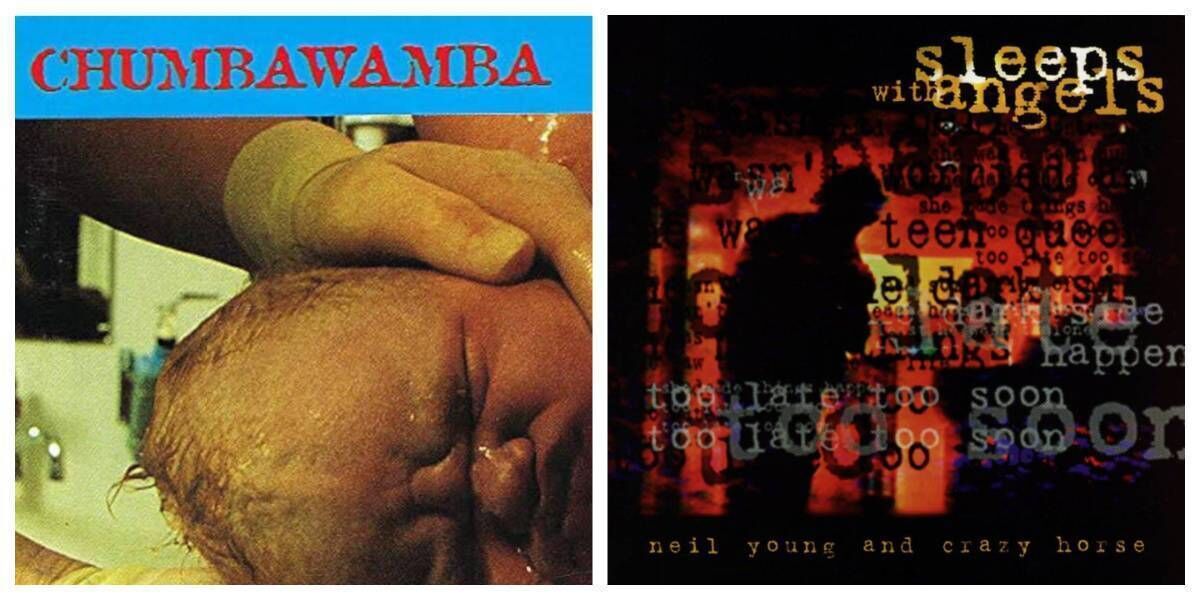
At the end of the 1980s, Neil Young underwent a miraculous artistic transformation which led to this incredible four-album creative run that’s up there with his best early ’70s work. This is the fourth of those albums and the second with The Horse, and probably the most eagerly anticipated given that it was the follow up to the blistering Ragged Glory, which many regard as his greatest record. Ragged Glory it ain’t . It’s a much deeper, more introspective and less anthem driven than its predecessor.
While there’s nothing you can really sing along to, the songs are still there. It’s as good an album as the three that came before it. The songs are surprisingly short for Young, except for the classic ‘Change Your Mind’, which clocks in at nearly 15 minutes. The songs took on a life of their own on the Weld tour and many are still performed in his live shows.
There was a huge level of expectation around the release of this record largely due to the four-year gap since the release of Blue Lines. They didn’t disappoint. Because of the rotating line-ups they were never likely to make Blue Lines 2, but it’s not remarkably different. The songs are better, the arrangements sharper and the production is slicker.
While the nucleus of 3D, Daddy G and Tricky remain, they’re also joined by Nicolette and Tracy Thorn on lead vocals on the title track and the sublime 'Better Things'. The real gems for me are the atmospheric ‘Heat Miser’ and ‘Weather Storm’. Horace Andy is also still there but I’d probably have left his live rendition of ‘Light My Fire’ on the cutting-room floor.
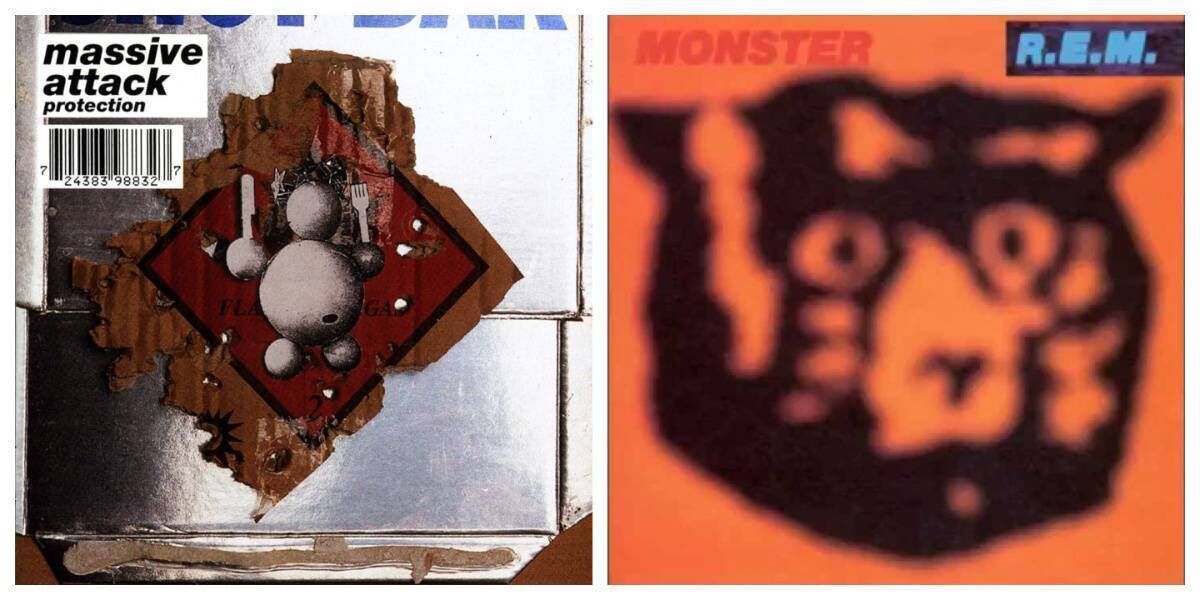
For their ninth album, REM decided to simplify things, turn the guitars up and make a straightforward rock record. It was a completely different approach than they’d previously taken, especially on the previous and quite complex Automatic For The People. Maybe they were tired or maybe they wanted an album that would be easy to play live. I had a nagging feeling at the time that they may have been a tad complacent. While there are some brilliant tracks on the album, particularly ‘Strange Currencies’ and the single ‘(What’s The Frequency) Kenneth’, they sound like they’re going through the motions on a lot of the tracks. The album did actually form the basis of their next tour, which I saw in Slane. It was amazing live, so they obviously knew what they were doing.
I don’t like grunge, and I don’t like Nirvana. This, however, is brilliant. Some people say the mark of a great song is whether it sounds good on an acoustic, a theory behind MTV’s successful Unplugged franchise in the 1990s. Artists were falling over each other to do this slot and many failed. Nirvana excelled beyond expectation. They added a cello and extra guitar, but everything was 100% acoustic and while they played songs from the three studio albums they added a lot of covers, in particular Bowie’s ‘Man Who Sold The World’, which they made their own. Easily the best of all the Unplugged records, it provided a glimpse of a creative side previously unseen, and a hint of what might have been.
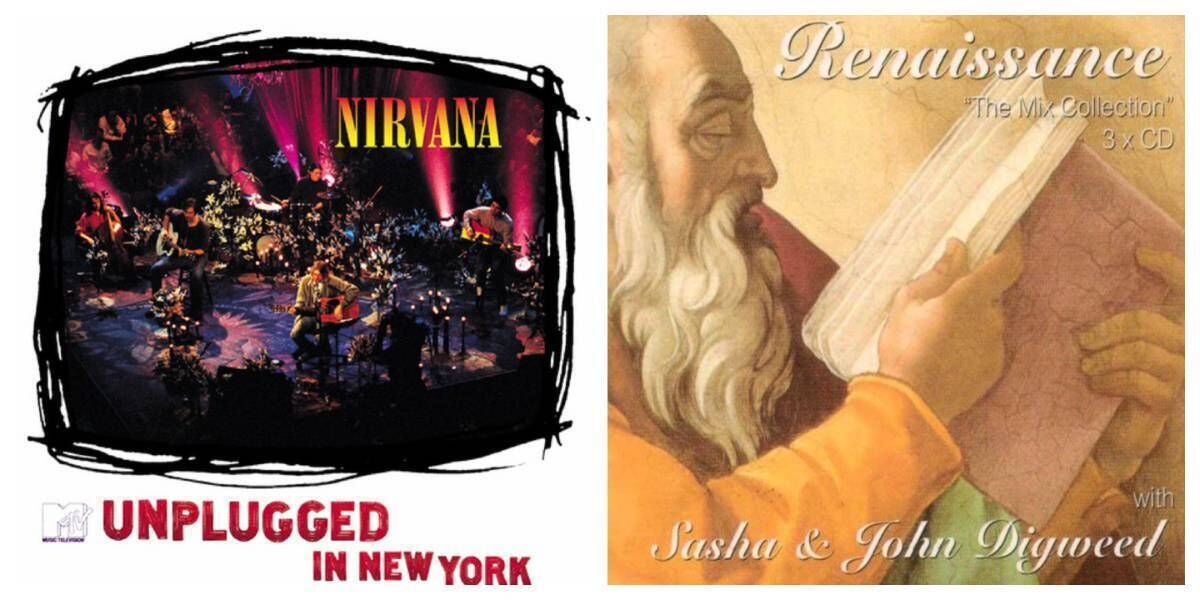
I know it’s a mix album but it’s not just any mix album. It’s Sasha & Digweed, the Batman and Robin of house music. Back in the day Sasha was this mythical figure who could outmix anyone, while John Digweed was his mysterious sidekick. Together they are credited with inventing what came to be known as progressive house. This mix collection became the template for the genre. Listening back to it now, my foot starts tapping and my eyes almost lock into a trance like state. It has so many classics — ‘Age Of Love’, ‘Bedrock For What You Dream Of’, and of course the Heller & Farley mix of Sunscreem’s ‘Perfect Motion’. If you were of a certain age in Cork back in the mid-90s, it was practically illegal not to have a copy of this mix.
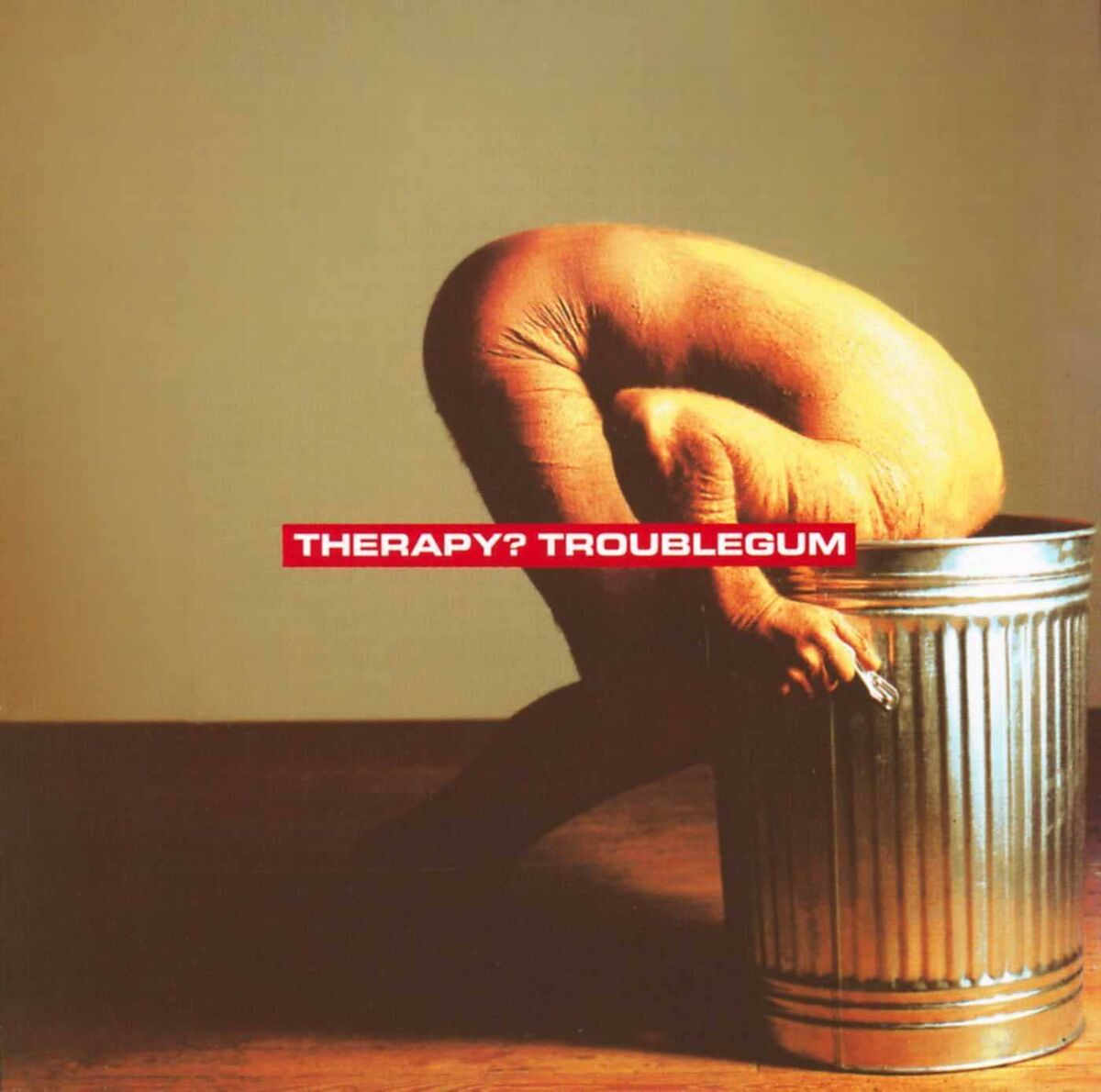
- Second album on a major label with a much poppier sound. Big time beckoned.
- Intelligent dance music they used to call it. Student hop we used to call it. Still, it had its moments.
- Depending on your viewpoint, this was either absolute genius or the musical equivalent of visiting the dentist.
- Oasis are like ma-a-a-armite. You either love them or hate them and they do exactly what it says on the tin.



